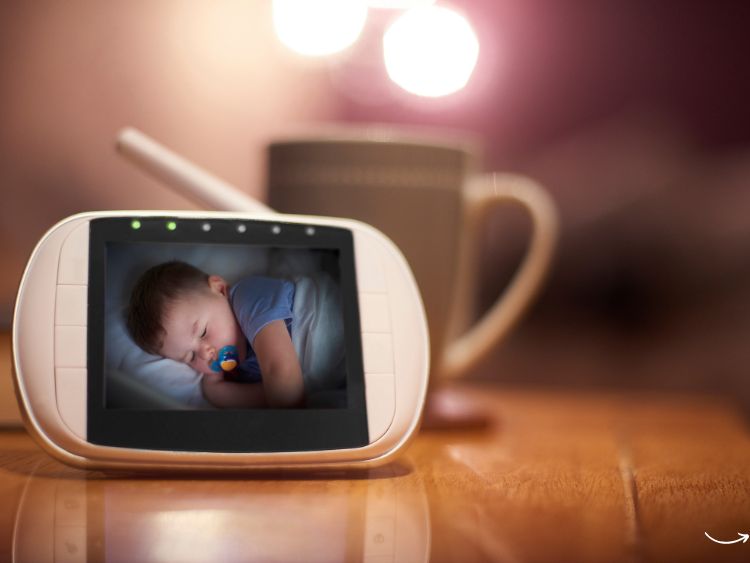Why a Baby Monitor is Every Parent’s Best Friend
Welcoming a new baby into the family brings countless joys—and just as many responsibilities. One of the top concerns for new parents? Keeping an eye (and ear) on their little one around the clock. That’s where a baby monitor comes in. Whether you’re a first-time parent or adding to your growing family, a baby monitor can offer peace of mind and make your parenting journey a little easier.
But with so many options on the market, how do you choose the right one? Let’s dive into everything you need to know about finding the perfect baby monitor.
What is a Baby Monitor and Why Do You Need One?
At its core, a baby monitor is a device that helps you keep tabs on your baby when you’re not in the same room. It allows you to hear—or even see—what’s happening in your child’s nursery without having to tiptoe in every five minutes.
Benefits of Using a Baby Monitor
- Peace of Mind: Know instantly if your baby needs attention.
- Convenience: Tend to household tasks or enjoy a much-needed break while keeping an ear out.
- Enhanced Safety: Some monitors come with features like movement detection or room temperature monitoring.
Types of Baby Monitors: Which One is Right for You?
Not all baby monitors are created equal. Depending on your needs and budget, here are the main types to consider:
1. Audio Baby Monitors
- How They Work: Transmit sound from the nursery to a receiver.
- Ideal For: Parents who prioritize simplicity and affordability.
- Key Features to Look For: Clear audio quality, two-way communication.
2. Video Baby Monitors
- How They Work: Include a camera for live video feed along with sound.
- Ideal For: Parents who want to visually monitor their baby.
- Key Features to Look For: Night vision, wide-angle lens, HD video.
3. Smart Baby Monitors
- How They Work: Connect to your smartphone or tablet via an app.
- Ideal For: Tech-savvy parents who want advanced features like sleep tracking or heart rate monitoring.
- Key Features to Look For: Wi-Fi connectivity, app compatibility, encrypted data.
4. Movement Monitors
- How They Work: Use sensors to detect your baby’s movements and alert you if something seems off.
- Ideal For: Parents who are particularly concerned about SIDS.
- Key Features to Look For: Accurate motion sensors, low false alarms.
Key Features to Look For in a Baby Monitor
When shopping for a baby monitor, it’s easy to feel overwhelmed. Here are some must-have features to keep in mind:
1. Range
- Make sure the monitor works well across your home, even through walls.
2. Battery Life
- Look for a monitor that lasts through the night without needing a charge.
3. Sound and Video Quality
- Clear sound and high-resolution video make a world of difference.
4. Additional Features
- Two-Way Talk: Speak to your baby through the monitor.
- Temperature Sensor: Ensure the nursery is comfortable.
- Lullabies: Built-in tunes to soothe your baby.
How to Set Up and Use a Baby Monitor
So, you’ve picked the perfect baby monitor—now what? Setting it up properly is just as important as choosing the right one.
Step-by-Step Guide:
- Pick the Right Spot: Place the monitor camera or audio unit where it captures the crib clearly without being too close (at least three feet away).
- Test the Range: Walk around your home to ensure the monitor works in all the areas you’ll be.
- Secure the Cords: Keep cords and wires out of reach to prevent accidents.
- Adjust Settings: Customize features like sound sensitivity or camera angles.
Pros and Cons of Baby Monitors
While baby monitors are a game-changer, it’s important to weigh their pros and cons.
Pros:
- Allows multitasking without losing track of your baby.
- Advanced features like sleep tracking provide valuable insights.
- Enhances safety and peace of mind.
Cons:
- Wi-Fi models can be vulnerable to hacking if not secured properly.
- Some models come with a steep price tag.
- False alarms from movement monitors can be stressful.
FAQs About Baby Monitors
1. When should I start using a baby monitor?
You can start as soon as your baby is born. Many parents find it especially useful during the first year when monitoring sleep and safety is crucial.
2. Are baby monitors safe to use?
Absolutely! Just ensure proper placement and follow the manufacturer’s safety guidelines. For Wi-Fi monitors, secure your connection with strong passwords.
3. Can I use a baby monitor for toddlers?
Yes! Many parents use them until their children transition to a regular bed, especially if they want to keep an eye on nighttime movements.
4. Do I need a Wi-Fi baby monitor?
Not necessarily. If you live in a smaller home or don’t need advanced features, a traditional monitor might be sufficient.
5. What’s the average price of a baby monitor?
Prices vary widely. Basic audio monitors start at $30, while high-tech smart monitors can cost $300 or more.
Top Baby Monitor Recommendations for 2024
Here’s a quick list of some highly-rated baby monitors:
- Audio Monitor: VTech DM221 Audio Baby Monitor
- Video Monitor: Infant Optics DXR-8 Pro
- Smart Monitor: Nanit Pro Smart Baby Monitor
- Movement Monitor: Owlet Dream Duo 2
Conclusion: Finding the Right Baby Monitor for Your Family
Choosing a baby monitor doesn’t have to be daunting. By understanding your family’s needs and prioritizing the right features, you can find a monitor that makes parenting a little less stressful—and a lot more enjoyable. Remember, the best baby monitor is the one that gives you peace of mind and fits seamlessly into your lifestyle.
Authoritative Links:
- https://www.aap.org (American Academy of Pediatrics)
- https://www.consumerreports.org (Consumer Reports)
- https://www.cpsc.gov (Consumer Product Safety Commission)

